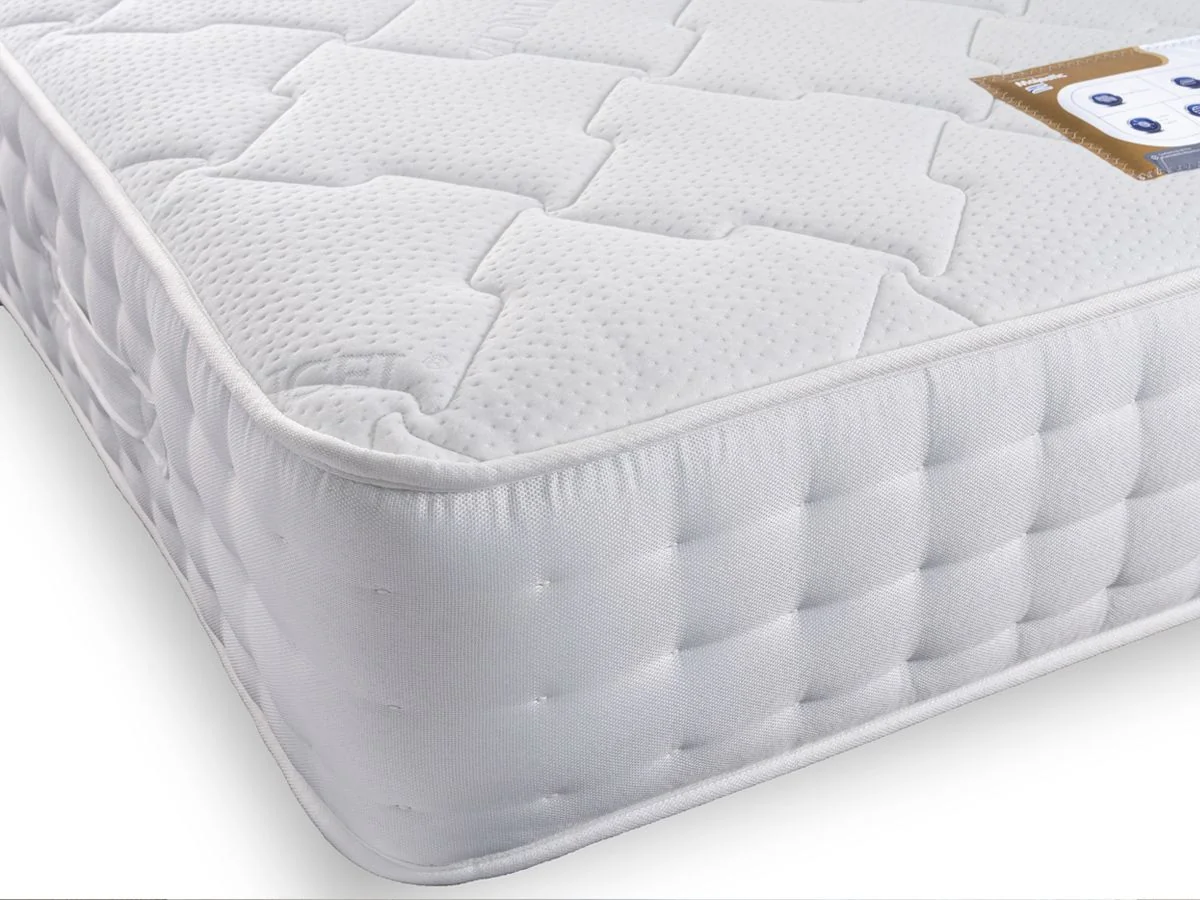Sleep Talk Blog, Bed and Mattress Guides
Soft, Medium, Or Medium-Firm Mattress? What's The Difference?
Soft, Medium, Or Medium-Firm Mattress?
Soft, medium and medium-firm denote mattress firmness ratings, indicating how much they sink when you lie on them.
As their names suggest, soft mattresses sink more than medium-firm mattresses, while medium mattresses sit somewhere in the middle.
When we recommend mattresses, we usually do so based on sleeping position, and this is where firmness ratings come in handy.
Tummy sleepers generally do best with a firm surface, back sleepers do best with a medium-firm feeling, and side sleepers do best with a medium feel. This is because the level of sinkage dictates spinal position.
This article explores the differences between soft, medium, and medium-firm mattresses to help you choose the best mattress.
Soft mattresses
Somewhat confusingly, soft mattresses are always labelled 'medium-soft' or 'soft-medium' – this is because they still provide some resistance to sinkage. There's no such thing as a soft mattress because it would collapse under you.
Soft mattresses have the least resistance to weight and pressure, deforming easily. Whether or not the level of deformation is suitable for you depends on how much you weigh because this dictates the sinkage level.
Generally, soft mattresses are suited to people weighing under 130 lbs (9.2 stone) and people with arthritis or joint pain.
If you weigh more than a soft mattress can support, you will sink deep into the bed, knocking your spine out of alignment and crumpling the mattress edge. You might also get 'roll-together,' where the mattress dips in the middle.
If a soft mattress suits you, check out the Sleepeezee G4 (£1,099, King), which has 4,200 pocket springs and a pillowtop with 6cm of memory foam.

A fantastic cheaper option is the Giltedge Beds Majestic (£499, King).

Medium mattresses
Medium mattresses are the most popular, offering the perfect balance between squishiness and support. They are best for side sleepers, who comprise 74% of the population.
A medium mattress is best for side and back sleepers weighing up to 195 lbs, after which a firmer sleep surface is usually best. Medium mattresses compress around 4cm when lying on them, providing a soft texture that relieves pressure.
Couples with one light and one heavy person also suit medium mattresses, which provide a welcome middle ground to keep everyone happy.
Side sleepers looking for pressure relief should look at memory foam mattresses like the Giltedge Solo Memory Plus (£349, King) or the Birlea Bliss (£599, King) if you want a super-soft foam surface with good support.


Medium-firm mattresses
If you are a back sleeper, a medium-firm mattress will suit you best because the robust support system promotes a neutral spine position. Side sleepers also do okay with medium-firm mattresses, but the firmer surface isn't ideal.
A medium-firm mattress will only compress around 2-3cm when you lie on it unless you weigh over 230 lbs, in which case you should get a firm mattress. The medium-firm surface is soft but resists weight for a night of less squishy sleep.
Studies also show that medium-firm mattresses are best for back pain, beating soft and firm mattresses for comfort and sleep quality.
We recommend medium-firm mattresses to back and occasional side sleepers, but front sleepers should choose a firm mattress.
If a medium-firm mattress suits you, check out the Sleepeezee G2 (£789, King), which has 2,200 SoftTech springs and 2cm of graphite memory foam.

Summing up
Soft mattresses suit a narrow gamut of people under 130 lbs and people with painful arthritis and joint conditions.
Medium mattresses suit side sleepers, who comprise 74% of the population, and back sleepers weighing up to 190 lbs.
Medium-firm mattresses are best for back sleepers and people with back pain – look for a thick layer of memory foam for pressure relief.
Related pages
- If you enjoyed this article, read our mattress buyer's guide for more expert tips.

